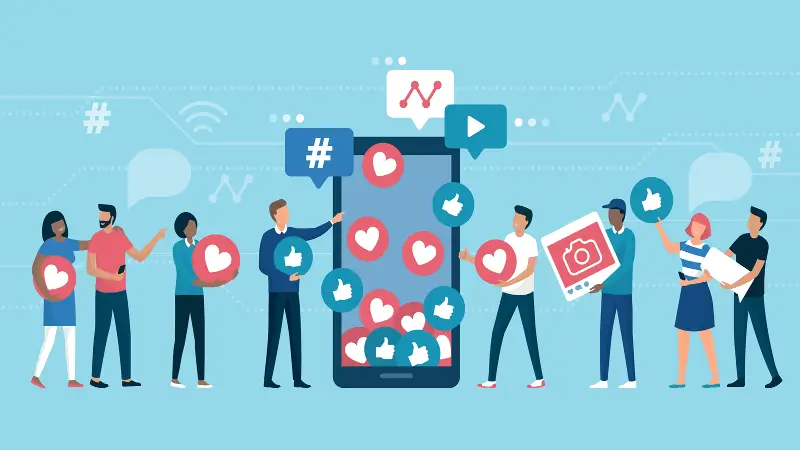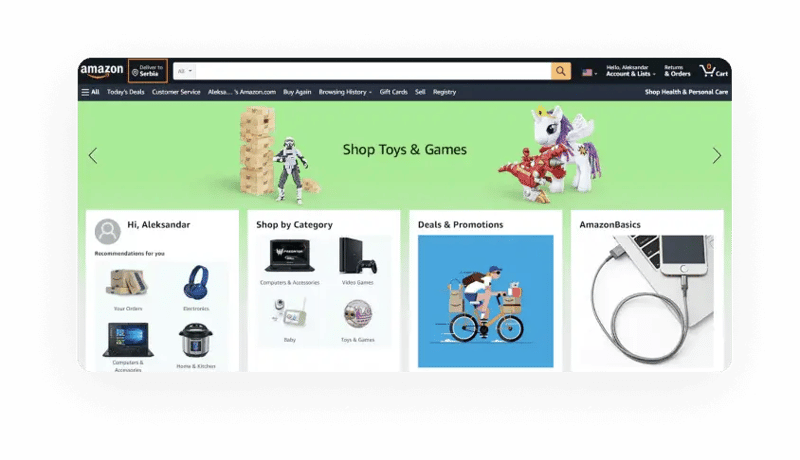5 Ways Social Listening is Taking CX to New Levels
In an era where social media dominates our conversations, a whopping 96% of your customers won’t tell you they are unhappy with your services but will speak about their disappointment on at least one social platform.
Social listening in 2024 could be the difference between positive customer relationships and a loss of potential leads. By tracking customer conversations about your brand on social media, you can quickly identify pain points and any negative sentiment related to your products and services.
Leveraging this data puts you in a position to respond instantly to any negative feedback and adapt your CX strategy accordingly for smoother future conversions.
The question is, could social listening take your CX strategy one step further? Let’s find out as we delve into five ways you can leverage social listening to build better CX relationships in 2024.

What Is Social Listening?
First things first, let's take a closer look at the practice of social listening.
Social listening is defined as the process of tracking online conversations about your brand on social media. It helps business leaders understand how their customers truly feel about the company.
Whether you choose to monitor brand sentiment via engagement or direct company mentions, there are a number of tools on the market that can sift through countless tweets, Facebook posts, Reddit reviews, and more.
Better still, social listening can be used to gain insights into your industry as a whole. As well as leveraging data on your one brand mentions, you can extract insights on competitor mentions, industry content trends, and general user behavior to get a full picture of target preferences, viral content formats, and the most profitable social media channels in the market for promotion.
How Social Listening Can Improve Your Customer Experience
There are plenty of ways to use social listening to level up your CX. Monitoring how your customers talk about your brand on social media aids you in understanding how they are experiencing your brand in real life.
Here are five ways social listening is changing the game for customer experience:
1. Gaining A Greater Insight Into How Your Customers See Your Brand
If you can understand your customer's feelings towards your brand, you can readily adapt your products and services to improve satisfaction.
Using social listening as a tool to measure consumer behavior when interacting with your brand's social posts and promotional content is a great way to measure the degree of interest your targets have in a product or service.
Better still, social listening tools also help you measure customer sentiment over longer periods of time. This makes it easier to track changes in customer behavior related to a product or service. Are more people interested in a product in summer rather than winter? Is a viral bestseller starting to lose engagement?
Amazon is great at doing this. The company leverages data from its user's social platforms to determine what its targets currently want and how they are reacting to certain product trends/releases.
This makes it easier to personalize their online store for each and every customer's gratifications and preferences.
2. Engaging in Real-Time Conversations
Customers turn to social media to share their thoughts on a brand, ask questions, and provide feedback on recently purchased products and services.
With the opportunity to listen to these conversations, brands can respond in real time to comments, direct messages, and social shares directed at them.
This not only adds an element of humanization to your customer service but also significantly enhances your customers' experience with your brand. Here, you can talk to consumers one-on-one and demonstrate a genuine commitment to their questions and feedback.
JetBlue Airways does just this. With a dedicated social media-based customer service team, they respond to customer DMs in real time about flights and flight status.

What a brilliant way to keep customers in the loop on their travel experience from start to finish.
3. Retaining Repeat Customers
Did you know that acquiring a new customer is five times more expensive than investing in customer retention?
Social listening tools can aid your retention strategy in several ways, all of which contribute to a positive CX for your business.
Using social listening, you can identify and retarget any repeat customers who come into contact with your content online. Keep track of what your customers are commenting on and engaging with, and send retargeted ads to their social feeds and email inboxes.
Better still, why not offer them discounts and exclusive offers during the retargeting process to secure the conversion?
4. Discovering Consumer Pain Points
Did you know that businesses that respond to a negative comment in under an hour see a 70% increase in customer satisfaction?
With over 96% of consumers likely to rant about a product they are unhappy with on a solid platform, social listening allows you to monitor and respond to any potential complaints quickly and accurately to resolve the issue and reduce the spread of negative sentiment amongst your demographic.
Handling customer complaints well is the difference between a one-time customer and one who returns despite a few teething problems.
One way to track consumer pain points effectively is to monitor a specific keyword or phrase that is generating the most negative noise cross-channel. Here, you can identify which channel generates the most important feedback and sink your teeth into handling and resolving customer complaints related to the topic.
This levels up your customer service and informs the team on areas of improvement for future customer interactions.
5. Monitoring Competitors
You can also use social listening to monitor your competitor's approach to customer service and use this information to improve your own strategy in 2024. By tracking rival brand mentions, you can view how a brand responds, if at all, and take notes based on their success rate.
Take Ford, for example; their social listening program focuses exclusively on competitor trends within the market. This includes monitoring any upcoming industry news on multiple social platforms and listening to industry associations like the ACI (Association for Competitive Intelligence).
Here, they leverage data on competitor brand performance, engagement, and growth, which can be used to influence their upcoming promotions in a social space.
Are You Ready To Start Social Listening?
As business competition heats up, it's becoming increasingly difficult for brands to remain afloat. When it comes to crafting the perfect customer experience, demanding demographics now require hyper-personalization and real-time responses.
Social listening is essential if you want to level up your CX game. With the ability to track brand mentions, reply instantly to customer pain points, and retarget shoppers with customizable offers, you get closer to your converting leads and encourage them to keep interacting with you.
This content is also available in:
- German: 5 Wege, wie Social Listening die Kundenerfahrung verbessert.
- Spanish: 5 formas en que la escucha social está llevando la CX a nuevos niveles
- French: 5 façons d'améliorer votre CX grâce à l'écoute sociale
- Italian: 5 modi in cui l'ascolto sociale porta la CX a nuovi livelli
- Romanian: 5 moduri în care Social Listening duce CX la noi niveluri
- Chinese: 社交网络聆听将客户体验提升到新水平的 5 种方法

Opinions expressed in this article are those of the guest author. Aspiration Marketing neither confirms nor disputes any of the conclusions presented.









Leave a Comment